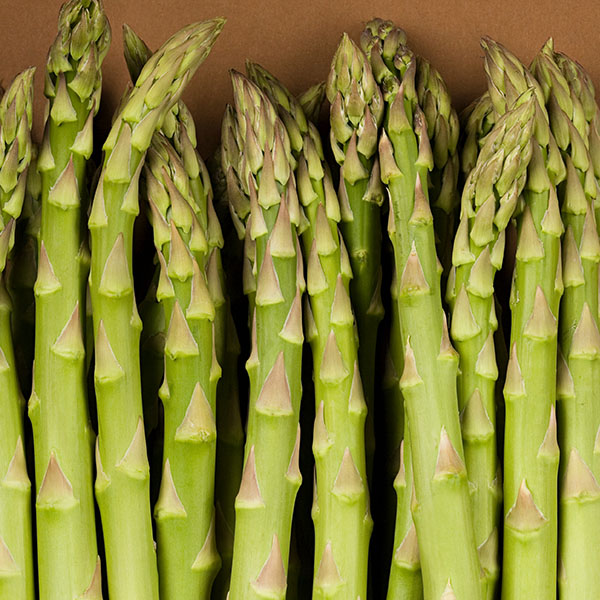All Hail Asparagus, the King of Vegetables

When I became a homeowner, I couldn’t wait to put down roots. Asparagus roots, that is! A perennial, asparagus is a little more demanding than your average homegrown vegetable, but it pays you back with interest for several years.
Growing it
Plant healthy asparagus roots in eight-inch deep trenches in early spring. Water during dry spells that first year, but don’t overdo it. Asparagus doesn’t like to be water-logged. Your biggest challenge will be keeping weeds at bay. Try mulching to make this chore easier.
Watch for asparagus beetles to attack your asparagus tips. The bugs can be picked off by hand and disposed of in a jar of alcohol.
You won’t be picking asparagus during the first year of growth. The idea is to allow the plants to establish themselves first. Any spears that are thinner that a pencil should be left to develop into ferns, which will in turn feed the roots of the plant. In the fall, leave the ferns in place until they die naturally.
Eating it
Often called the “Food of Kings,” asparagus has a long history dating back to the ancient civilizations of Greece and Rome. It is said that King Louis XIV of France ordered that special greenhouses be erected so he could enjoy asparagus year-round.
If time and space constraints keep you from growing asparagus at home (or you picked your crop and ate it on the way back to the house), look for these delicious spears at a nearby farmers’ market.
Asparagus could not be easier to prepare. It can be steamed, sautéed, roasted, served in a salad or frittata, with pasta, or even eaten raw.
There’s just one more thing to recall about this royal vegetable: As it is loaded with amino acids and vitamins, it may impart a strong odor to your urine. Don’t panic! This common side effect shall pass, and until it does, endure it as a badge of honor for having treated yourself to a delicious, natural, nutrient-packed food.
 The Daily Dose
The Daily Dose
Lauren Daknis
My favorite way to prepare this is roasted with a smidge of garlic, olive oil, and fresh lemon juice… yum.